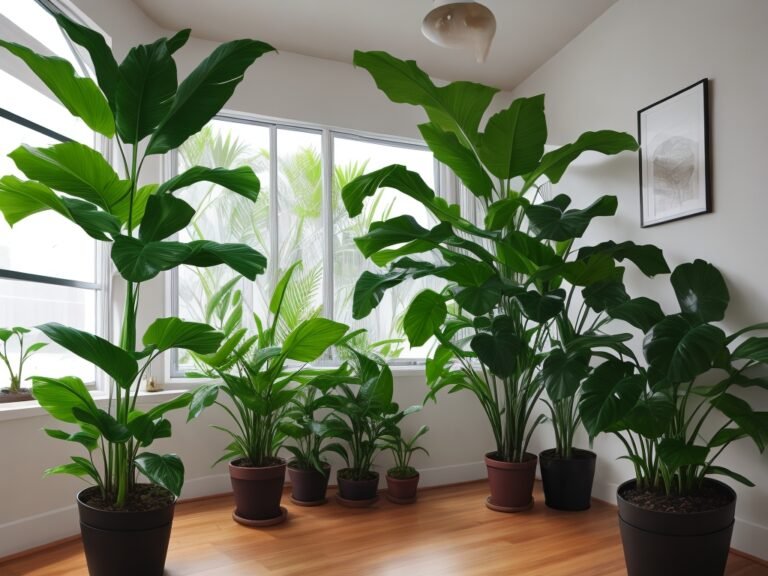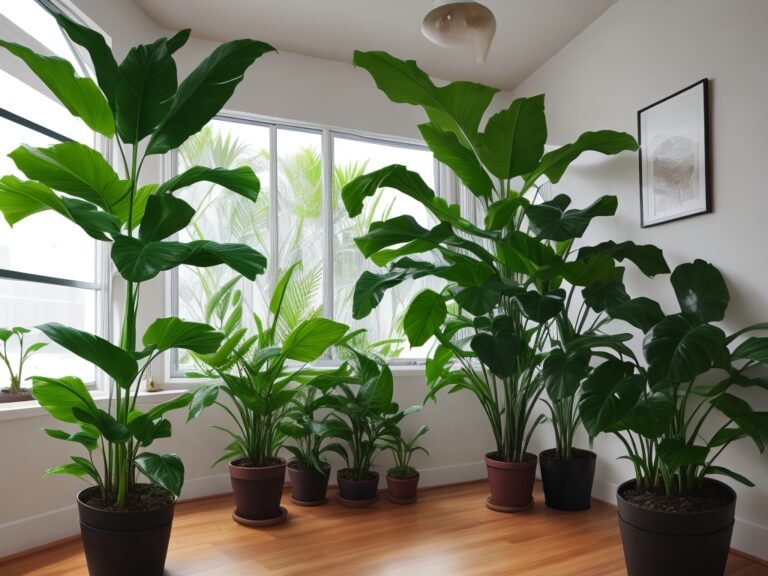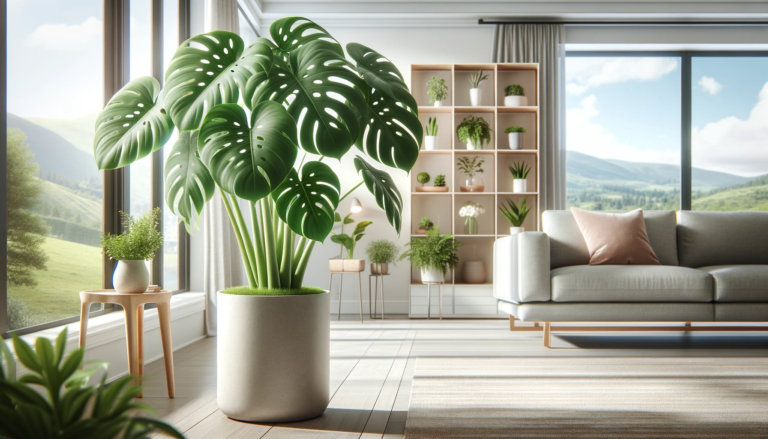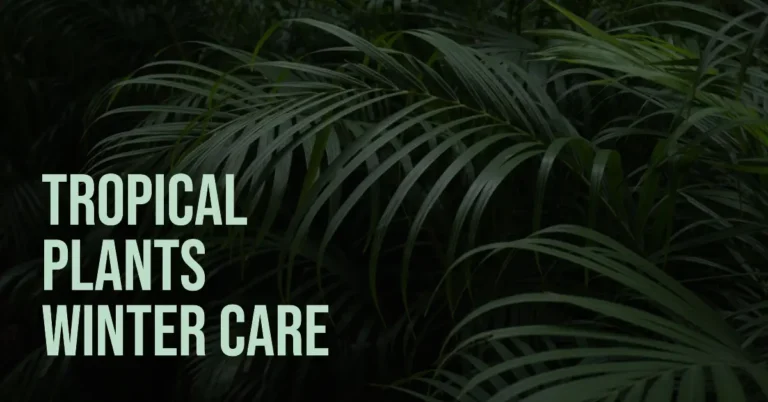How To Grow Gorgeous Tropical Plants Indoors: A Step-By-Step Guide
Key Takeaways:
- Choose tropical plants that are suitable for indoor environments, such as peace lilies, snake plants, and pothos.
- Provide the right amount of light, using a combination of natural and artificial light sources to mimic the tropical plant’s natural habitat.
- Maintain proper humidity levels by misting the plants regularly or using a humidifier.
- Water tropical plants consistently, allowing the soil to dry out slightly between waterings. Avoidyellowing leaves from your tropical plants
Does your home need a touch of exotic beauty?
Imagine stepping into a lush, tropical oasis, filled with vibrant colors and breathtaking foliage.
Now, what if I told you that you can create this stunning escape right inside your own home?
In this step-by-step guide, I will show you how to grow gorgeous tropical plants indoors, allowing you to bring the beauty of the tropics into your living space.
From selecting the right plants to creating the ideal environment, nurturing, pruning, and troubleshooting, I will share all the tips and tricks you need to know for successful indoor tropical plant care.
Get ready to transform your home into a tropical paradise!
| Step | Description |
|---|---|
| 1 | Select the right plants |
| 2 | Provide ample light |
| 3 | Maintain a suitable temperature |
| 4 | Ensure proper watering |
| 5 | Fertilize regularly |
| 6 | Prune and trim when necessary |
| 7 | Monitor pest and disease issues |
| 8 | Provide appropriate humidity |
| 9 | Repot as needed |
| 10 | Stay patient and enjoy the results! |
Benefits of Growing Tropical Plants Indoors
Growing tropical plants indoors has several benefits, including improved air quality and increased humidity levels. Additionally, they add aesthetic beauty to your indoor space.
Improved Air Quality
Improved air quality is a significant benefit of growing tropical plants indoors. Plants naturally purify the air by absorbing carbon dioxide and releasing oxygen.
They also remove toxins and pollutants, such as formaldehyde and benzene, from the air, creating a healthier living environment.
Increase in Humidity
Increasing humidity is one of the benefits of growing tropical plants indoors.
Plants naturally release moisture into the air through a process called transpiration.
This raises the humidity level, creating a more comfortable environment for both you and your plants.
Higher humidity also helps prevent issues like dry skin and respiratory problems.
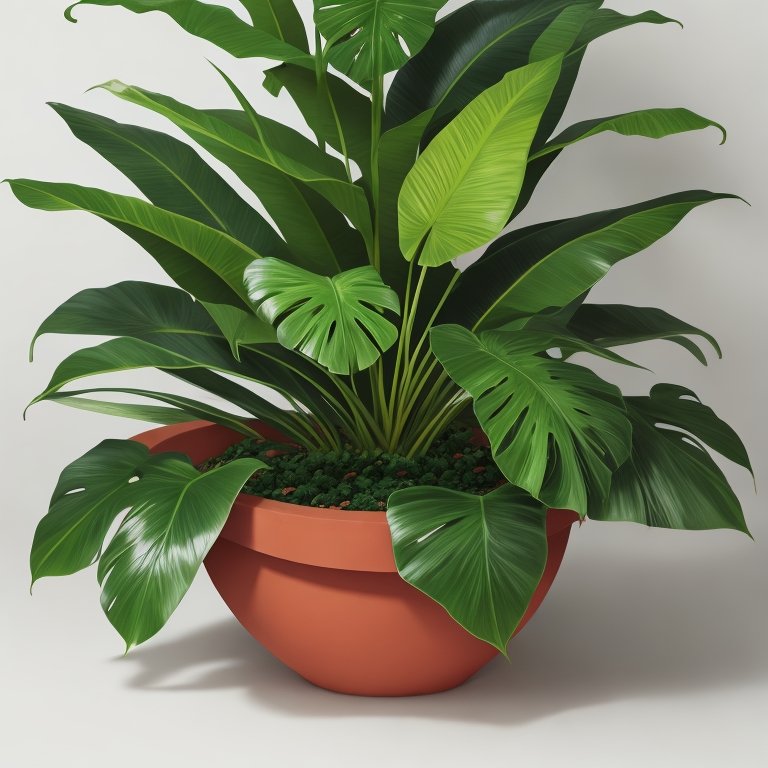
Aesthetic Beauty
Indoor tropical plants bring a touch of natural beauty and a vibrant tropical atmosphere to any space. The lush foliage, unique shapes, and colorful flowers of these plants create a visually appealing and calming ambiance.
They can instantly transform a dull room into a lively and inviting oasis.
Whether you choose large, statement plants or smaller, delicate species, the aesthetic beauty they provide is sure to enhance any indoor environment.
Choosing the Right Tropical Plants for Indoor Growth
When choosing tropical plants for indoor growth, it is important to consider researching suitable options and evaluating their light requirements and space constraints.
Researching Suitable Tropical Plants
To research suitable tropical plants for indoor growth, start by considering the lighting conditions in your home. Determine if you have bright, indirect light or low light areas.
Next, evaluate the available space you have for plants.
Consider the size, shape, and growth habit of the plants you are interested in. Lastly, look for plants that match your care abilities and preferences.
Consider factors like water requirements, humidity levels, and temperature preferences.
With these factors in mind, you can find the perfect tropical plants for your indoor jungle!
Considering Light Requirements
Considering light requirements is essential when growing tropical plants indoors.
Different tropical plants have varying light preferences, so it’s important to research each specific plant’s needs.
Some tropical plants thrive in bright, direct sunlight, while others prefer indirect or low light conditions.
Ensure that your indoor space can provide the necessary light levels for the tropical plants you choose to cultivate.
Evaluating Space Constraints
When evaluating space constraints for growing tropical plants indoors, consider the available space and the size of the plants you want to grow.
Measure the area and determine if it can accommodate the plants comfortably.
Assess the height of the room to ensure that taller plants have enough space to grow upward.
Additionally, take into account any furniture or obstacles that may limit the space available for your tropical plants.
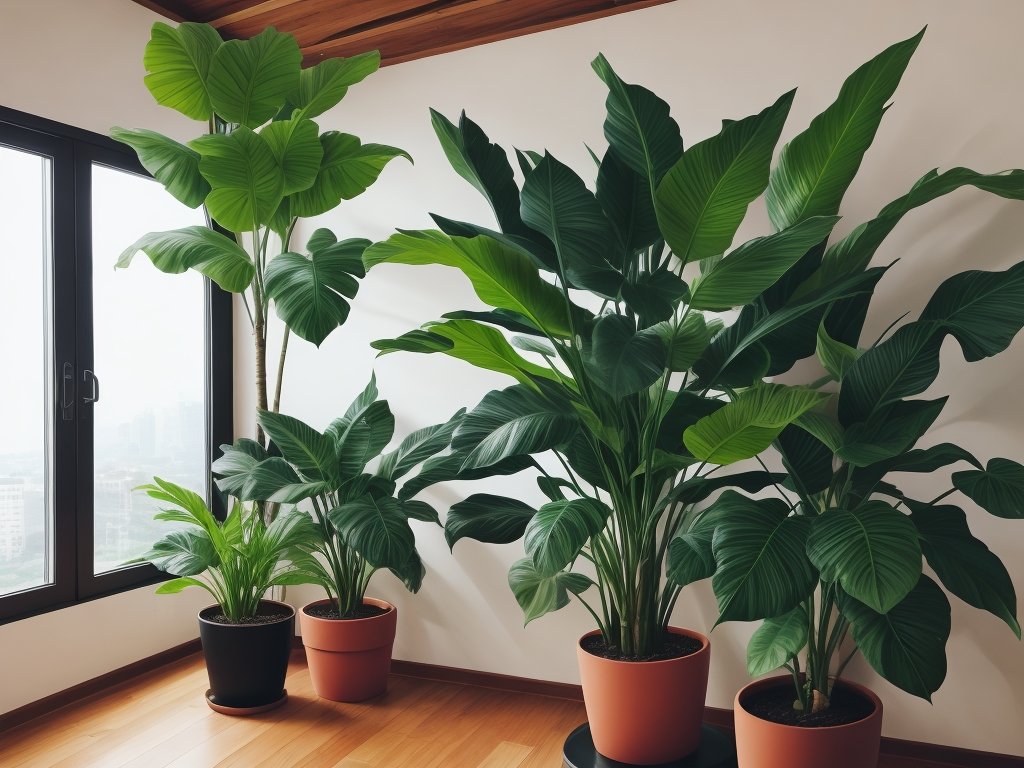
Creating the Ideal Environment for Tropical Plants
To create the ideal environment for tropical plants, you need to consider providing adequate light, maintaining optimal temperature and humidity, and choosing the right soil and fertilizers.
Providing Adequate Light
Providing adequate light is essential for the health and growth of tropical plants indoors.
Here are a few tips: – Place your plants near a window that receives bright, indirect light.
– If natural light is limited, supplement with grow lights.
– Rotate your plants regularly to ensure even light distribution.
– Avoid placing plants in direct sunlight to prevent burning.
– Monitor your plants for any signs of light deficiency or excess.
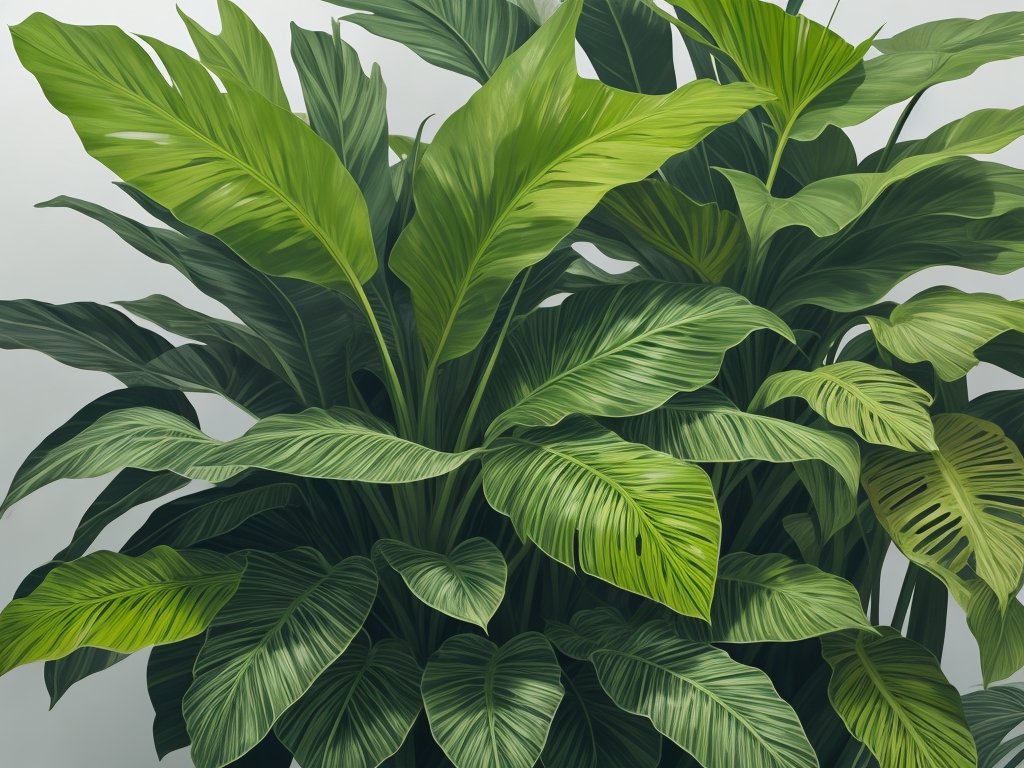
Maintaining Optimal Temperature and Humidity
Maintaining optimal temperature and humidity is key to the success of your indoor tropical plants. To ensure the right conditions, keep the temperature between 70-85°F (21-29°C) during the day and slightly cooler at night.
Humidity levels of 50-60% are ideal, which can be achieved through misting, using a humidifier, or placing a tray of water near your plants.
Regularly monitoring and adjusting these factors will help create a thriving environment for your tropical plants.
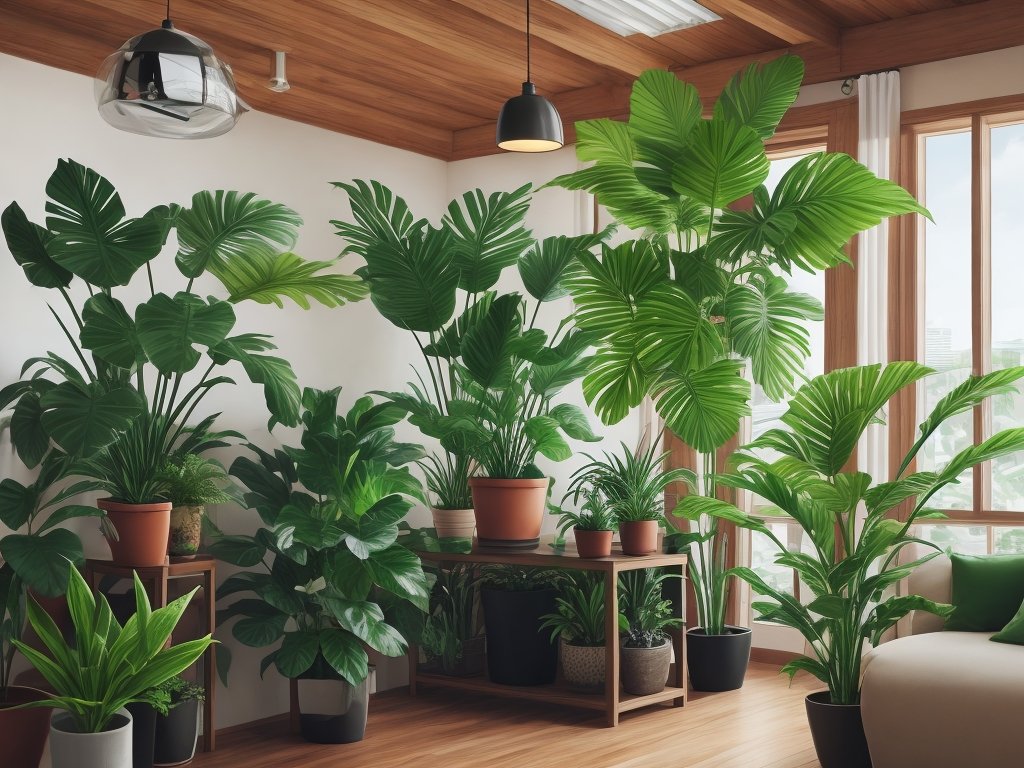
Choosing the Right Soil and Fertilizers
Choosing the right soil and fertilizers is essential for the healthy growth of tropical plants indoors. Here are a few key factors to consider:
- Soil type: Use well-draining soil that retains moisture but doesn’t become waterlogged. A mix of potting soil, peat moss, and perlite or vermiculite works well.
- pH level: Most tropical plants prefer slightly acidic to neutral soil. Test the pH level and adjust accordingly using additives like limestone or sulfur.
- Nutrient content: Tropical plants have specific nutrient requirements. Choose a fertilizer that is formulated for indoor plants and contains a balanced ratio of nitrogen, phosphorus, and potassium.
- Slow-release vs. liquid fertilizers: Slow-release fertilizers provide a steady supply of nutrients over time, while liquid fertilizers offer quick absorption. Choose based on your plants’ needs and your preferred method of application.
- Organic vs. synthetic fertilizers: Organic fertilizers are derived from natural sources and provide long-term benefits to the soil. Synthetic fertilizers are quicker-acting but can build up salts over time. Decide which option aligns with your gardening philosophy.
Remember, each tropical plant may have specific soil and fertilizer requirements, so research the needs of your chosen plants and adjust accordingly.
Selecting the Perfect Containers for Tropical Plants
Selecting containers with proper drainage, choosing the right size, and considering aesthetics and style are key factors when it comes to growing tropical plants indoors.
Ensuring Sufficient Drainage
Ensuring sufficient drainage is essential for the health and growth of tropical plants indoors. Here are a few quick tips to help you achieve this:
- Use pots with drainage holes: Make sure the containers you choose have drainage holes at the bottom to allow excess water to escape.
- Add a layer of gravel or stones: Placing a layer of gravel or stones at the bottom of the pot can further promote drainage by creating a space for water to collect without saturating the roots.
- Use well-draining soil: Opt for a lightweight potting mix specifically formulated for tropical plants. This type of soil will allow water to flow through easily and prevent waterlogging.
- Avoid overwatering: Only water your plants when the top inch of the soil feels dry to the touch. This will prevent water from accumulating and ensure the roots are not sitting in soggy conditions.
Remember, proper drainage is vital to prevent root rot and other water-related issues. By taking these steps, you can create a healthy and thriving environment for your tropical plants indoors.
Choosing the Right Size
Choosing the right size for your indoor tropical plants is essential for their health and growth.
The size of the container should allow for proper root development without being too large or too small.
Consider the size of the plant at maturity, as well as its growth rate, to determine an appropriate container size.
It’s better to choose a slightly larger container to accommodate future growth rather than having to repot too frequently.
Considering Aesthetics and Style
Considering aesthetics and style is an important factor when selecting containers for your indoor tropical plants.
You want your plants to enhance the overall visual appeal of your living space.
Here are a few things to keep in mind:
- Match the container style with your home decor: Choose containers that complement the style of your interior design. Whether you prefer modern, rustic, or traditional, there are plenty of options available to suit your taste.
- Consider the color and texture: Select containers that harmonize with the colors and textures already present in your room. Whether you go for bold and vibrant or subtle and neutral, make sure it complements the overall aesthetic.
- Think about the size and shape: Choose containers that are proportionate to the size of your plants. Consider the available space and ensure the container doesn’t overwhelm or overcrowd the area.
- Don’t be afraid to get creative: Think outside the box and explore unique container options such as repurposed items or hanging planters. Just ensure they provide adequate drainage and are suitable for your plants’ needs.
Remember, the goal is to create a visually appealing indoor garden that brings joy and adds a touch of beauty to your home.
So, have fun and let your personal style shine through your choice of containers for your tropical plants.

Nurturing Tropical Plants with Proper Watering Techniques
Watering your tropical plants properly is essential for their growth and health. Let’s explore how you can nurture your plants by understanding watering frequency, monitoring soil moisture levels, and avoiding overwatering or underwatering.
Understanding Watering Frequency
Understanding the watering frequency for your indoor tropical plants is essential for their health and growth.
It’s important to strike a balance between underwatering and overwatering.
You should water your tropical plants when the top inch of soil feels dry to the touch.
Remember, it’s better to underwater than overwater.
Monitoring Soil Moisture Levels
To monitor soil moisture levels in your tropical plants, you can use a moisture meter or simply stick your finger into the soil up to the first knuckle. If the soil feels dry, it’s time to water.
If it feels moist, wait a bit longer.
Avoid overwatering, as it can lead to root rot.
Essential Tips for Pruning and Grooming Tropical Plants
To keep your tropical plants looking their best, here are some essential tips for pruning and grooming.
Removing Dead or Yellowing Leaves
To remove dead or yellowing leaves from your tropical plants, simply use a clean pair of pruning shears or scissors.
Cut the leaf stem as close to the base of the plant as possible, being careful not to damage any healthy foliage.
Dispose of the removed leaves to prevent the spread of any potential diseases.
Regularly removing dead or yellowing leaves helps promote the overall health and appearance of your indoor tropical plants.
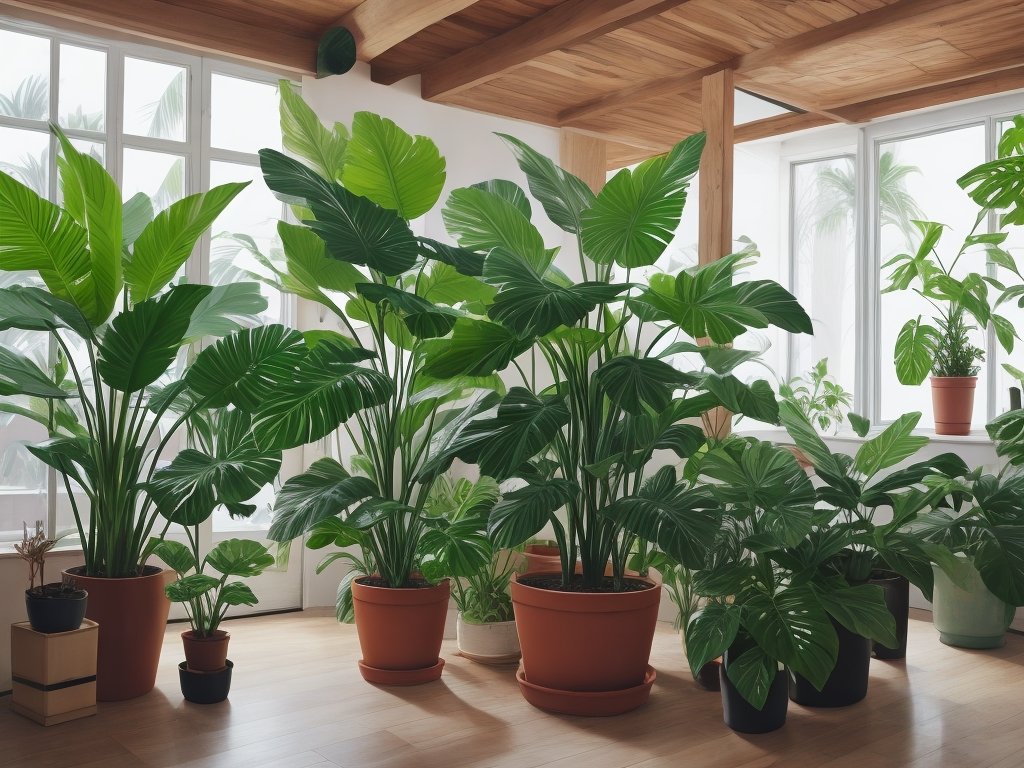
Promoting Bushier Growth through Pruning
Pruning is important for promoting bushier growth in tropical plants.
By removing the top growth, you’re encouraging the plant to branch out and grow more compactly.
Prune back any leggy stems or weak growth to redirect the plant’s energy into producing new growth.
Additionally, regularly pinch back the tips of the plant to promote branching and create a bushier appearance.
Pinching Back for Compactness
Pinching back is a simple pruning technique that helps to promote compact and bushy growth in tropical plants. It involves using your fingers or sharp scissors to pinch off the tips of the stems.
This encourages branching and prevents the plant from becoming tall and leggy.
Regularly pinching back your tropical plants will help them maintain a more attractive and lush appearance.
Preventing and Managing Common Tropical Plant Pests
Preventing and managing common tropical plant pests is essential for the health and well-being of your indoor plants.
Identifying Pest Infestations
Identifying pest infestations is important to maintain the health of your tropical plants.
Look for signs such as yellowing leaves, holes or bite marks, webbing, or visible pests like aphids or mealybugs.
Regularly inspect your plants and take action promptly to prevent further damage.
Natural Methods of Pest Control
Natural methods of pest control are effective and environmentally friendly.
Some techniques include:
- Introducing beneficial insects like ladybugs to control aphids.
- Using neem oil or soap spray to deter pests.
- Applying diatomaceous earth to get rid of crawling insects.
- Growing companion plants that repel pests, like marigolds or basil.
- Regularly inspecting plants for signs of infestation and manually removing pests.
- Using sticky traps to catch flying insects.
Remember, prevention is key.
By creating a healthy growing environment and practicing good hygiene, you can minimize the risk of pest problems.
Using Chemical Treatments as a Last Resort
When dealing with pest infestations on your tropical plants, using chemical treatments should be a last resort. Instead, try natural methods such as introducing beneficial insects, regularly inspecting your plants, and practicing good hygiene.
Chemical treatments can be harmful to both the environment and your plant’s health, so it’s important to exhaust all other options first.
Fertilizing Tropical Plants for Optimal Growth
To achieve optimal growth for your tropical plants, fertilization is key.
Understanding the nutrient needs, choosing the right fertilizer type, and following proper application are all vital.
Choosing the Right Fertilizer Type
Choosing the right fertilizer type is essential for the optimal growth of your indoor tropical plants.
Look for a balanced fertilizer with equal ratios of nitrogen, phosphorus, and potassium.
Consider slow-release granular fertilizers for convenience or liquid fertilizers for faster absorption.
Additionally, choose a fertilizer specifically formulated for tropical plants to meet their specific nutrient needs.
Troubleshooting Common Issues in Indoor Tropical Plant Care
Having some trouble with your indoor tropical plants? Here’s how to troubleshoot common issues like yellowing leaves, wilting or drooping plants, and mold or fungal growth.
Yellowing Leaves
Yellowing leaves in tropical plants can indicate various issues.
Here are some possible causes: insufficient lighting, overwatering or underwatering, nutrient deficiencies, or pest infestations.
To address this, adjust lighting, water plants properly, ensure proper drainage, fertilize as needed, and monitor for pests.
Mold or Fungal Growth
Mold or fungal growth on indoor tropical plants can be a common issue. To prevent it, ensure proper air circulation and avoid overwatering.
Remove any affected leaves or areas immediately.
Control humidity levels and keep the plant in a well-lit area. Regularly clean and inspect your plants to catch any signs of mold or fungi early on.
Frequently Asked Questions about Growing Tropical Plants Indoors
Can all tropical plants be grown indoors?
Not all tropical plants can be grown indoors successfully. Some tropical plants have specific environmental needs such as high humidity, intense sunlight, or a large amount of space to grow.
It’s important to research and choose tropical plants that are well-suited for indoor conditions.
How do I prevent my indoor tropical plants from becoming too leggy?
To prevent your indoor tropical plants from becoming too leggy, make sure they receive enough light.
Place them near a south or west-facing window, or use grow lights if natural light is limited.
Rotate the plants regularly to ensure even growth.
Avoid overwatering and provide proper nutrition through balanced fertilization.
Prune regularly to maintain compactness and encourage bushier growth.
What is the best location in the house for tropical plants?
The best location in the house for tropical plants is near a window with bright indirect sunlight.
Tropical plants thrive in warmth and high humidity, so a spot with temperatures between 60-80°F (15-27°C) is ideal.
Keep them away from drafts and air conditioning vents.
Final Verdict
Growing tropical plants indoors offers numerous benefits, including improved air quality, increased humidity, and aesthetic beauty. To succeed in this endeavor, it is important to choose the right tropical plants and create the ideal environment for their growth, taking into consideration factors such as light requirements and space constraints.
beauty of indoor tropical plantsring techniques, pruning, pest management, and fertilization are also key to ensuring the health and beauty of indoor tropical plants.
By following these steps and troubleshooting common issues, anyone can create a lush and vibrant tropical oasis in their own home. So why not bring a touch of the tropics indoors and enjoy the beauty and benefits it brings?


